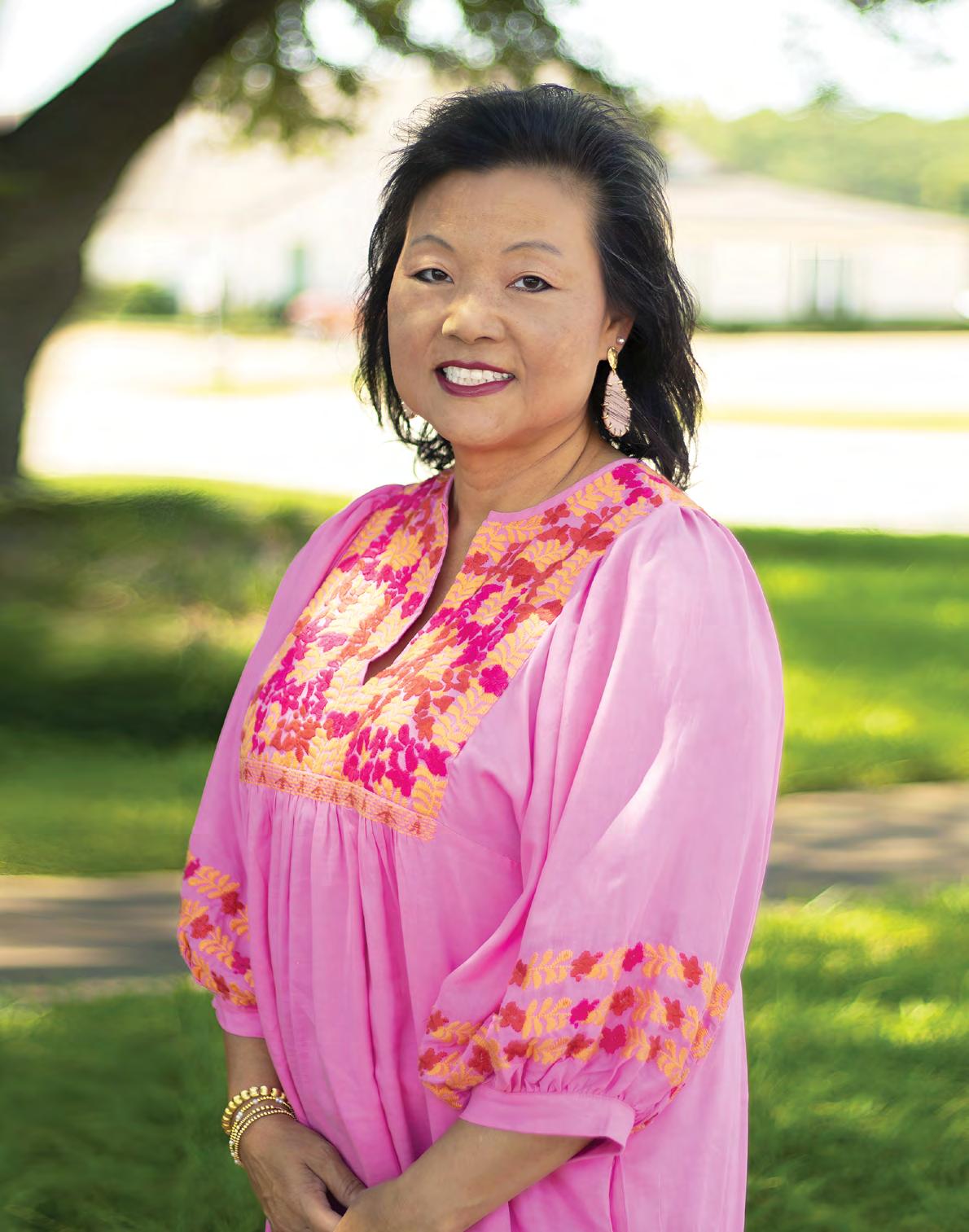







PRCA hits Tyler like a thunderclap — boots down, bulls loose, and East Texas never looked back
By PAULA JIMENEZ www.infinitieplusmag.com
The East Texas State Fair (ETSF) recently marked a significant milestone by hosting its first Professional Rodeo Cowboys Association (PRCA)sanctioned rodeo. The event was presented by Cavender's and celebrated with a ribboncutting ceremony, co-hosted by the Lindale Chamber of Commerce and the Tyler Area Chamber of Commerce, and dubbed “Roundup Day.
"Elected officials and their representatives attended the ribbon cutting.
For over 113 years, the ETSF has been an annual community tradition, and this year’s rodeo pushed the celebratory envelope further.
For example, the ribbon cutting brought together students, families, elected officials, and the East Texas community, marking the opening of the Herd Arena and the start of the Fair at the Rose City. The inaugural rodeo took place from
September 19 to 21, 2025, with sold-out events every night. It drew enthusiastic crowds to the newly opened Herd Arena, where 2,500 fans cheered each night, creating an electric atmosphere filled with community spirit.
The rodeo featured a lineup of over 300 competitors, including seasoned steer wrestler Slate Wiseman from Kilgore, who showcased the dedication of countless hours spent in the arena. Spectators witnessed top bull riders, high-speed team roping, barrel racing, and the little buckaroos competing in the Mutton Bustin' event.




Hello infinitieplus magazine Family, Welcome to the Fall and the month of October.
In this edition we brought you great stories of wonderful things happening in our region, East Texas.
For example, at the East Texas State Fair, DUST KICKED UP, HISTORY WAS MADE, PRCA hit Tyler like a thunderclap — boots down, bulls loose, and East Texas never looked back. The PRCA brought the heat, the Herd Arena brought the roar, and East Texas wrote a new chapter in rodeo grit.
If this sounds like a good western movie, you got it right – it is, kind of - because it really happened in Tyler. The story is from page 3.
And the Women Today cover with Grace English, MD; is a testament that anyone could use. Get your napkins because you may cry out of repentance or joy because of God’s redemptive power. Flip this magazine and read one of the best stories of 2025.
Thanks for reading. We look forward to serving you again in November by His grace.


Joycelyne Fadojutimi, Ph.D.
LT Class 22 - The Best Class Ever. “Double Deuce.”

The Magazine for Living Life Beyond, Plus One…
Publisher / Editor
Joycelyne Fadojutimi, PhD
Chief Public Relations/Mkt. Officer
Paula Jimenez
Staff Writer
Peace Floris
Contributing Writers
Glenn Miller
Mechele Agbayani Mills
Dr. Michael Guido
Scotts Roberts
Graphic Designer
Kuneho Designs
OUR MISSION
To enrich the local-global community with the “just in time knowledge,” to assure future successes
OUR VISION
To become an information oracle of functional and constructive reports that serves the needs of businesses and communities.
Submission Deadline: The first of every month prior to month of issue. infinitieplus magazine is not responsible for any discrepancies or changes since the publishing of this issue. At the time of publication, to the best of our knowledge, all information was accurate though not guaranteed. The entire contents of infinitieplus magazine is copyrighted 2025. Any reproduction or use in whole or part without written permission is prohibited. infinitieplus magazine reserves the right to edit and make appropriate modifications. The opinions published by contributing writers do not necessarily reflect the views of infinitieplus magazine or its advertisers.
P. O. Box 12473
Longview, Texas 75602-2473 www.infinitieplusmag.com
Phone: 903.918.7706





Cover Story
Editor's Page
Business and Finance
Money Matters
Education
Community Connections
Health and Wellness
Women Today
Women Wellness
Inspiration

Parking Facility and Office Complex—
Standing across the street from the courthouse, the facility is more than just a place to park.
It includes 13,000 square feet of office space, soon to be home to the Tax Office, Elections Administration, and the Veterans Administration.
“People kept calling it a parking garage. But it’s more than that.
It’s a parking facility because you don’t take your car here for repairs—you park here.”
- Honorable Gregg County Judge Bill Stoudt.

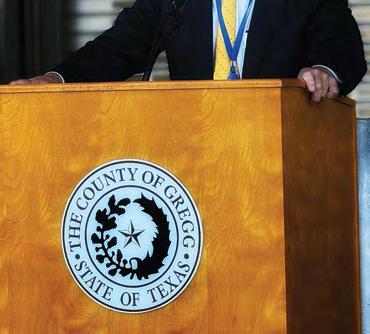


EVERY STUDENT. EVERY SCHOOL. EVERY DAY. How one Chief of Schools turned strategy into STAAR stellar success.
LEADING WITH INTENTION, DELIVERING RESULTS How ETAA Chief of Schools Melanie Pondant transformed campuses.
Story by JOYCELYNE FADOJUTIMI www.infinitieplusmag.com
LEADING WITH PURPOSE: A CONVERSATION WITH MELANIE HAMILTON, TCIS CHIEF OF SCHOOLS, LONGVIEW ISD
Melanie Hamilton has a diversified educational portfolio with a:
z Bachelor of Science degree in accounting from Grambling State University. Grambling, Louisiana
z A Teacher Certification from LeTourneau University, Longview, Texas
z A master’s degree in educational leadership from the University of Texas Permian Basin in Odessa, Texas
z Superintendent Certification from Texas A&M in Texarkana, Texas
And she has 17 years’ experience in education.
What inspired you to pursue a career in education and ultimately become a Chief of Schools?
My journey into education began with a desire to make a meaningful difference in students’ lives. What started as a profession quickly became my purpose: to ignite a love for learning and drive a culture of excellence. Over time, I realized that my impact could stretch
far beyond the walls of a single classroom. By supporting school leaders and teachers, I could help create thriving environ ments for students across entire campuses and districts. Serving as a Chief of Schools allows me to do just that—shape systems, support educators, and ensure every child has access to a highquality education.
Can you walk us through your professional journey?
I began as a classroom teacher, where I developed a deep foundation in curricu lum and instruction. I later served as a district elemen tary math specialist, and then as a campus prin cipal, roles that allowed me to lead instructional transformation first hand. I transitioned to Region 7 as a Coor dinator in the Center for Effective Schools, where I partnered with school lead ers to build strategic visions, implement datainformed practices, and drive systemic change. Each role has reinforced my belief in the power of leadership, align

ment, and a relentless commitment to high expectations. Now, as a Chief of Schools, I oversee multiple campuses with a focus on sustainable improvement and equity for all learners.
How would you describe your leadership style?
My leadership style is collaborative, strategic, and results driven. I place a high val-
ue on relationships, transparency, and consistency—while maintaining a sharp focus on accountability and student outcomes. I believe in empowering principals and teachers to lead; while ensuring they have the tools and support necessary to achieve success.
What values guide your decision-making?
My core values are equity, excellence, and integrity. Ev-
ery decision I make is rooted in what’s best for students. I prioritize access to high-quality instruction, long-term sustainability, and data-informed planning without ever losing sight of the people behind the numbers. Strategic Leadership and Vision
Which district-wide initiatives contributed most to your recent STAAR success?
Contd. on Page 8




















Several key strategies played a role including:
• Implementing tiered intervention systems to meet students where they are.
• Strengthening Professional Learning Community, PLCs to foster collaboration and data-driven instruction.
• Using common assessments and accountability checkpoints to track progress consistently across campuses.
How did you ensure alignment between district goals and campus execution?
We created clear structures for communication, coaching, and feedback. Regular leadership meetings, campus walkthroughs, and data reviews ensured that principals not only understood the district’s goals but also had the guidance to bring those goals to life at the campus level.
How did you prioritize support across schools with varying needs?
We took a data-informed, context-sensitive approach. Campuses with the greatest academic gaps received intensive coaching, additional resources, and more frequent monitoring. Higher-performing schools were recognized and received strategic support to sustain their momentum and avoid complacency.
Which data indicators were most critical in predicting STAAR outcomes?
We focused closely on benchmark data, formative assessments, growth metrics, and student attendance. Growth data, in particular, served as an early indicator of whether instructional strategies were having the desired impact.
How did you support principals in using data to inform instruction?
We established regular data meetings with principals, instructional coaches, and teachers. These sessions were collaborative, focused on identifying learning gaps and generating actionable next steps to improve instruction in real time.
What role did district assessments play in your success strategy?
District-wide benchmarks provided a unified view of progress across campuses. They helped us identify trends, measure mastery, and adjust instruction before the STAAR window opened.
How did you differentiate support based on campus performance?
We used a tiered support model. For example, struggling campuses received frequent coaching visits, intensive interventions, and additional instructional staff. On the other hand, more successful campuses received targeted support designed to maintain high performance while encouraging innovation.
What types of interventions did you implement for schools with the greatest needs?
We offered after-school tutoring, Saturday academies, embedded instructional coaching in math and literacy, and targeted professional development for teachers.
Were there specific highleverage strategies that led to quick improvement?
Yes. Two strategies stood out:
1. Instructional coaching cycles with clear feedback and follow-through.
2. Non-negotiable data practices, including routine data reviews and action planning to close learning gaps promptly.
How did you build leadership capacity among principals?
We treated principals as our lead instructional drivers. Through leadership academies, individualized coaching, and collaborative sessions, we equipped them with the tools to lead instruction and meet STAAR expectations head-on. What professional development models were most impactful?
We leaned on proven frameworks like Paul Bambrick-Santoyo’s Leverage Leadership and Get Better Faster to guide our coaching. These models helped standardize our approach to development while allowing for campus-level customization. Contd. on Page 10
How did you ensure instructional quality remained consistent across campuses?
We implemented district-wide instructional frameworks and aligned professional learning accordingly. Regular walkthroughs helped us calibrate expectations and maintain a shared standard of excellence.
What systems helped monitor progress toward academic goals?
Our key systems included:
• Learning walks
• Instructional coaching cycles
• Campus and district data reviews These routines allowed us to track progress in real time and pivot as needed.
How did you balance accountability with empowerment for school leaders?
We set clear goals and monitored progress while fostering a culture of trust and collaboration.
Regular coaching conversations helped leaders reflect, solve problems, and take ownership of their outcomes.
How did you maintain momentum without causing burnout?
We paired high expectations with high levels of support. Moreover, leaders and teachers were given coaching, resources, and encouragement, ensuring they felt equipped, not overwhelmed.
Which practices from your STAAR success are you planning to scale moving forward?
We will continue using the tiered support model, reinforce consistent use of formative assessments, and scale leadership development practices that proved most effective. What systemic challenges did you face, and how did you overcome them?
One major challenge was creating consistency across campuses with varying capacities. We overcame this by standardizing expectations and strengthening monitoring, while still tailoring support to each school’s needs.
What’s your plan to sustain and grow academic momentum?
We’ll deepen instructional coaching, refine our data systems, and invest in meaningful professional learning. We’re also focusing on student engagement and positive campus culture because academic success is tied to how students and staff feel.
How did campus culture and student engagement influence outcomes?
They were foundational. When students feel supported, recognized, and challenged, they rise to the occasion. Our focus on campus culture, high expectations, and student voice played a critical role in our success.

If you had to name one core principle that drove this year’s results, what would it be?
A steadfast belief in the potential of every student supported by strong systems, strategic leadership, and an unwavering commitment to equity and excellence.
Chief Hamilton’s journey reflects the power of intentional leadership grounded in purpose, strategy, and compassion. Her work is a blueprint for educational leaders aiming to drive transformation across schools and systems—one student, one leader, and one campus at a time.
Texas Council of International Studies. TCIS a 501(c)(3) nonprofit, was established to support the general improvement of education for Texas IB students and schools. TCIS facilitates implementation of IB programs through partnership agreements with IB schools and districts. The primary connection between TCIS and Longview ISD is through personnel, such as Melanie Hamilton, who serves as chief of schools for Longview ISD under the TCIS umbrella, and through collaboration on educational initiatives and programs.
Chief Hamilton oversees: Longview High School, Hudson Pep Elementary, Foster Middle, Judson STEAM Academy, Clarence W. Bailey Elementary, and Ned E. Williams Magnet STEAM Elementary.
Story by JOYCELYNE FADOJUTIMI www.infinitieplusmag.com
From the classroom to the central office, Melanie Pondant has always led with purpose, and the results speak for themselves.
Her journey began with a Bachelor of Science in Education from Henderson State University in Arkadelphia, Arkansas, where her passion for teaching took root early on. Pondant knew from the start that education wasn’t just a career, it was her calling.
But her drive didn’t stop there.
Determined to lead beyond the classroom, she went on to earn a master’s in educational leadership and a Superintendent Certification from Texas A&M University in Texarkana, Texas. These credentials laid the foundation for a leadership style focused on strategic growth, equity, and measurable impact.
Today, as Chief of Schools at ETAA, Melanie Pondant is rewriting the playbook, transforming underperforming campuses, elevating school leadership, and delivering real results on the
STAAR assessment . Experience: She has more than three decades of experience in edu cation, including 18 years in ad ministration.
FROM COURTSIDE TO CLASSROOM LEADERSHIP
Pendant’s journey into edu cation began on the basketball court. As a collegiate athlete her first career move was a natural one, coaching women’s basket ball. After 13 years in athletics and starting a family, she redi rected her competitive drive to ward school leadership. Earn ing her master’s degree, she stepped into administration, where her passion for excel lence continued to flourish.
Pondant’s professional tra jectory includes roles such as:
• Teacher
• Head Coach
• Girls Athletic Director
• Assistant Principal and Asso ciate Principal
• Principal of Judson STEAM Academy (transformed school into an “A” campus)
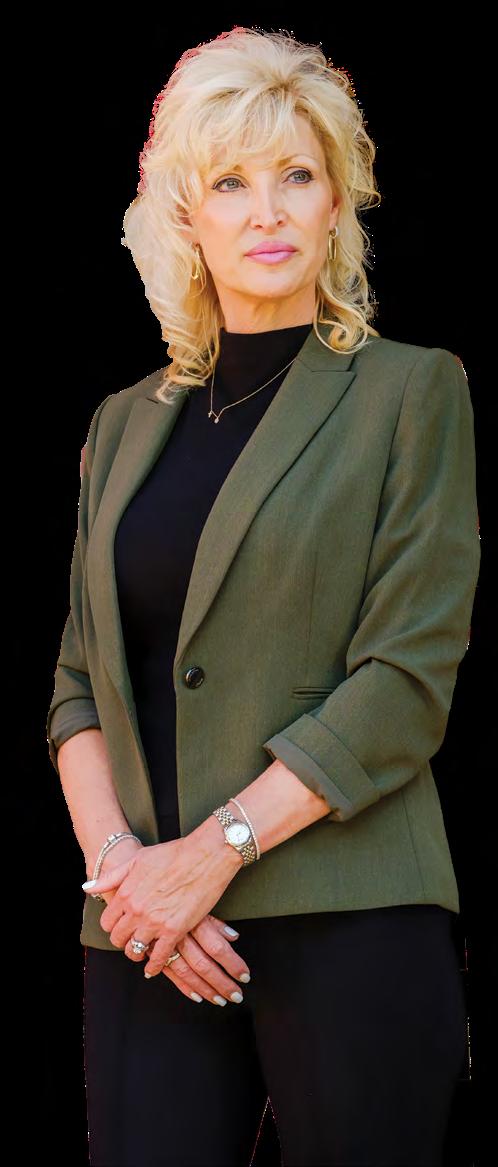
• Secondary Curriculum Director
• Current Role: Chief of Schools, East Texas Advanced Academies (ETAA)
RELATIONAL. INTENTIONAL. STRATEGIC.

Pondant describes her leadership style as relational and intentional centered on building authentic relationships while driving purposeful actions. Her decision making is grounded in:
Integrity
Equity
High Expectations
Empathy
Collaboration
Moreover, she aligns daily actions with long-term vision, maintaining a positive, forwardthinking outlook that inspires those around her.
DRIVING GROWTH: THE STAAR PLAYBOOK
Strategic Vision and Campus Tiering
To address the diverse needs across campuses, Pondant implemented a tiered support model, ensuring resource allocation matched each school’s performance profile. This allowed for precise, highimpact interventions where they were needed most.
Her key data indicators included:
Student Achievement
Student Growth
Pondant led efforts to sup -
port principals in analyzing interim and formative data, asking critical questions such as:
• “What do these results tell us about student understanding?”
• “Which instructional practices are working?”
• “Where do we need to adjust pacing or interventions?”
High-Leverage Actions
Her most effective move one might ask and she answered: Empowering principals to become data-savvy instructional leaders. By providing full training on using assessment data strategically, Pondant ensured every student and every educator was positioned for growth.
STRENGTHENING SYSTEMS.
Building Principal Capacity
Pondant works closely with principals to help them lead instructionally. She sets clear goals aligned with student outcomes, offers coaching and feedback, and creates structures that promote collaboration and accountability.
Supporting Teachers
Through Aligned
Pondant used District-level professional development, emphasizing high-quality instructional materials, data-driven practices, and consistent expectations across campuses.
• District-wide common assessments
• Structured campus walkthroughs and feedback loops
• Data-driven Professional Learning Community, PLCs
• What is a PLC and Why it is important. Chief Pondant explains it this way: In the ever-evolving world of education, one powerful tool continues to transform schools from the inside out: the Professional Learning Community, or PLC. But what exactly is it? At its core, a PLC is a team of educators, whether grouped by grade level, subject area, or as an entire teaching staff working collaboratively to improve teaching and elevate student success. These aren’t just meetings for meetings’ sake. PLCs are vibrant, purpose-driven communities that bring educators together to share ideas, tackle challenges, and reflect deeply on their practice. Here's why they matter:
• First: They Drive Real Improvement in Teaching and Learning
Imagine having a regular space to share ideas, test new strategies, and learn what’s working in other classrooms. That’s the beauty of a PLC. Teachers pool their experiences, reflect on student data, and innovate together.
on Page 14
This shared responsibility ensures that every student, not just those in your class room benefits from collec tive expertise.
• Secondly:They Build Stron ger, More Connected Teams
Weekly PLC meetings aren’t just for logistics—they build trust, leadership, and camara derie. When educators know each other's strengths and feel heard and respected, a true sense of team emerg es. This bond helps create a school culture where every one is committed to student growth, and every voice con tributes to the greater mission.
• Moreover: They Promote Meaningful Reflection
Sometimes the best ideas come from conversation. PLCs encourage teachers to ask important questions: Is this strategy working? How can we adjust? What’s best for our students? By cre ating a space for thoughtful reflection, educators are em powered to grow and to en sure that student achievement always remains the end goal.
• The Bottom Line Pondant says “PLCs aren’t just another initiative. They are a transformative force in education, turning isolated classrooms into collabora tive hubs of innovation, sup port, and progress. Whether you’re a new teacher or a seasoned veteran, being part of a PLC means you’re never working alone, and most importantly, your stu dents reap the rewards.
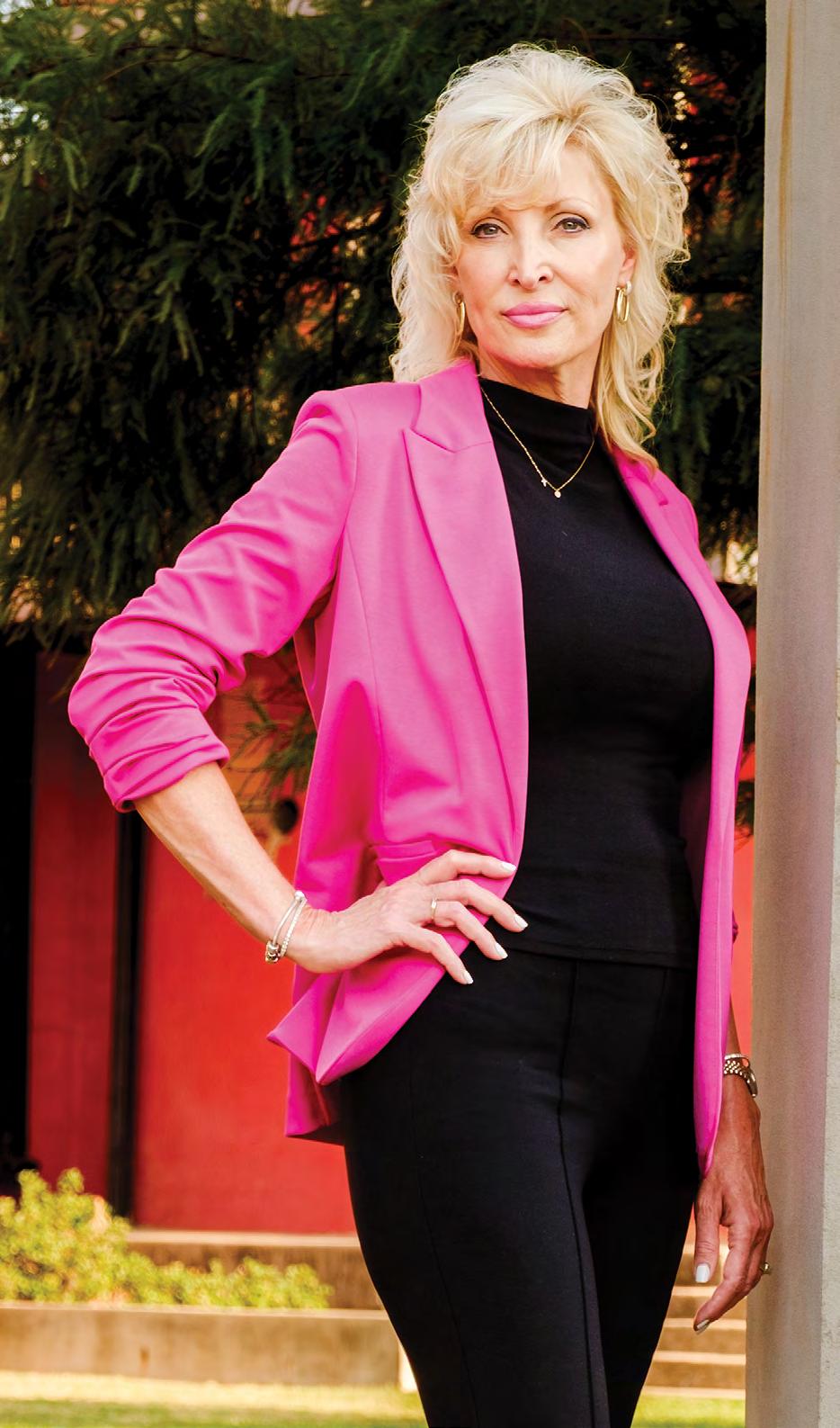
In addition, Pondant emphasizes that academic success is inseparable from school culture and student engagement. Her leadership consistently nurtures environments where students and teachers feel motivated, supported, and held to high standards.
“THE BAR IS THE BAR”— AND EVERYONE CAN REACH IT
When asked to identify the core mindset that drove ETAA’s success, Pondant is clear:
“Focus. Intentionality. Consistency. Excellence for all—because the bar is the bar.”
WHAT’S NEXT?
To sustain and build on the STAAR momentum, Pondant is focused on:
• Growing principals as instructional leaders
• Continuing to close achievement gaps
• Strengthening Tier 1 instruction
What Is Tier 1 Instruction— and Why Does It Matter?
Think of Tier 1 instruction as the foundation of a strong educational experience. It’s the starting point for all students, and it's designed to meet the needs of every learner in the classroom—every single day. As the anchor of a Multi-Tiered System of Sup-

ports (MTSS), Tier 1 is where high-quality, research-backed teaching happens. Teachers use evidence-based curricula, proven strategies, and well-designed materials to ensure students are not just keeping up but thriving.
Typically aligned with state standards, Tier 1 instruction aims to deliver consistent, effective learning opportunities —no matter a student's background, strengths, or challenges. That is not all. Tier 1 is more than just what’s taught— it’s how it's taught. Great Tier 1 classrooms focus on:
Contd. on Page 16
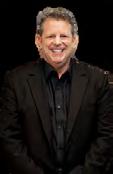








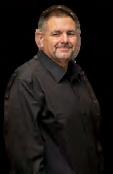





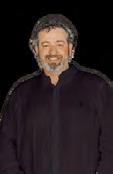

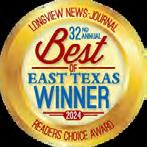














• Academic growth
• Social-emotional development
• Positive behavior and engagement
Teachers use tools like explicit instruction, differentiation , and classroom management strategies to create a supportive environment where students can succeed.
And Tier 1 doesn’t stop there. It’s also data driven. Teachers continually monitor progress to ensure students are on track and to quickly spot anyone who might need extra help. In short, Tier 1 instruction is the everyday instruc-
tion all students receive, built on strong curriculum, sound teaching practices, and a commitment to helping everyone succeed from the start.
Pondant is also preparing for Texas' new testing system by scaling the most effective STAAR-era practices, especially those tied to student growth.
Melanie Pondant is more than a Chief of Schools. She is a strategic architect of student success, a coach of campus leaders, and a champion for equity and
high standards. Her impact is seen not only in rising scores, but in the empowered educators and engaged learners she leads.
East Texas Advanced Academies (ETAA) is an SB 1882 Partnership of Longview ISD. Chief Pondant oversees: East Texas Montessori Prep Academy (ETMPA), Bramlette STEAM Academy, JohnstonMcQueen Elementary School, J.L. Everhart IB Elementary School, Ware Montessori Academy, and Forest Park IB Magnet School.
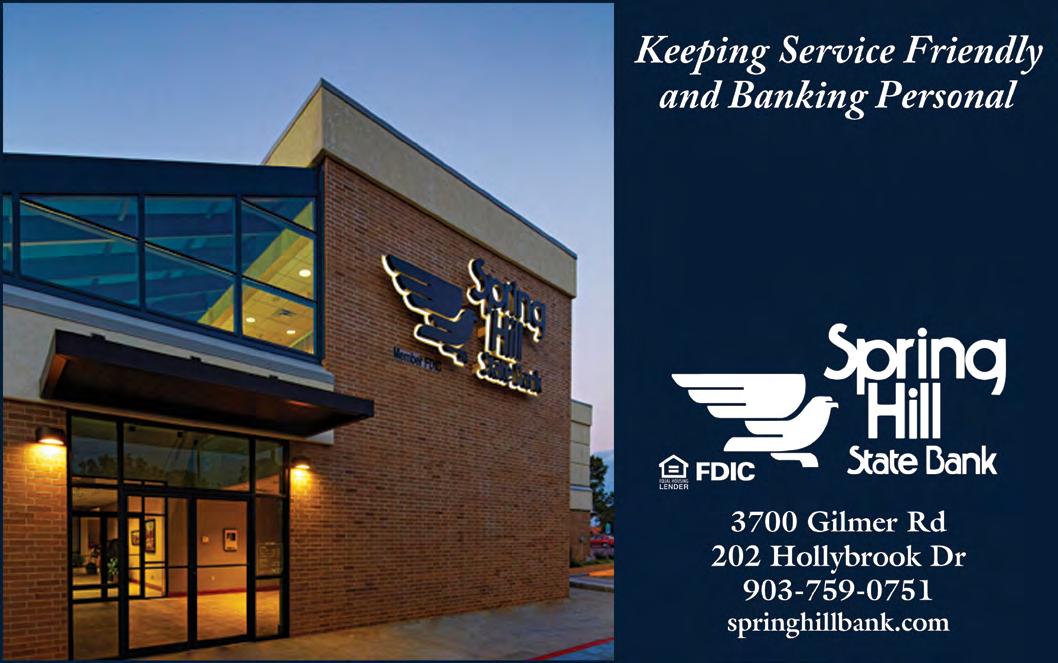
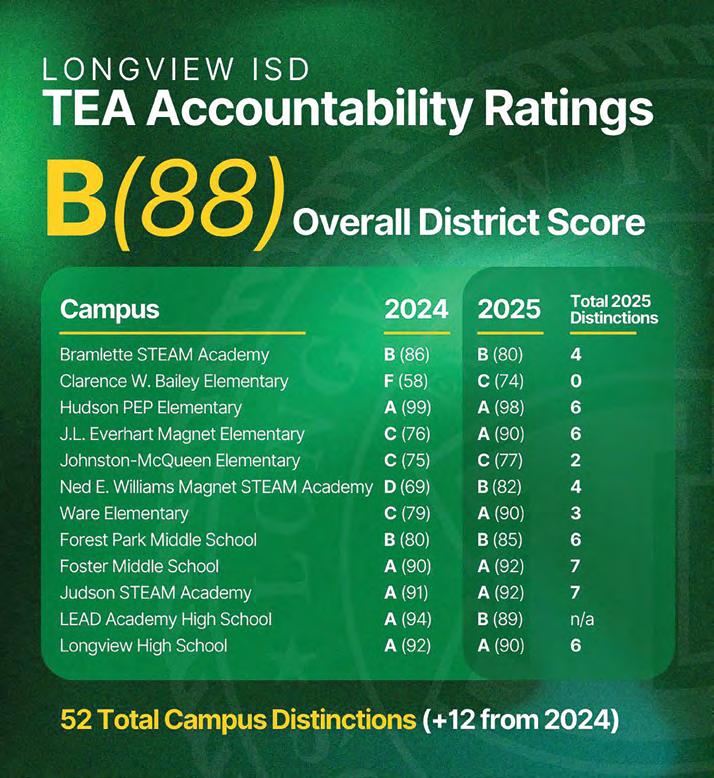



Further, ETSF Rodeo gave away $45,000 in prize money, bringing top athletes from across the country. ETSF Chairman Michael Stoltz says the winnings counted towards qualifiers at a national level.
It is important to note; the City of Tyler and Smith County have been supportive of the rodeo's creation. At the rodeo announcement, Tyler's Mayor, Don Warren, humorously remarked that he would ride bareback if Cody Rosenbalm, the president of the East Texas State Fair, really wanted him to.
All jokes aside, the ETSF economic impact is substantial. In a 2012 study, Smith County Judge Neal Franklin reported that the fair generated $12 million for the local economy. This year, he anticipates that figure could go up between $15 and $20 million.
The presenting sponsor, Cavender’s, expressed their commitment to East Texas.
“Having been part of the East Texas State Fair leadership for years, it’s exciting to see the expansion of rodeo to the event,” said Joe Cavender, President of Cavender’s and Honorary Lifetime Director of East Texas State Fair.
“We are excited to be the title sponsor of the rodeo. We look forward to outfitting East Texans with new boots, jeans, and hats this fall,” said Jennifer Green, Cavender’s PR Manager.
The partnership with the PRCA added another layer
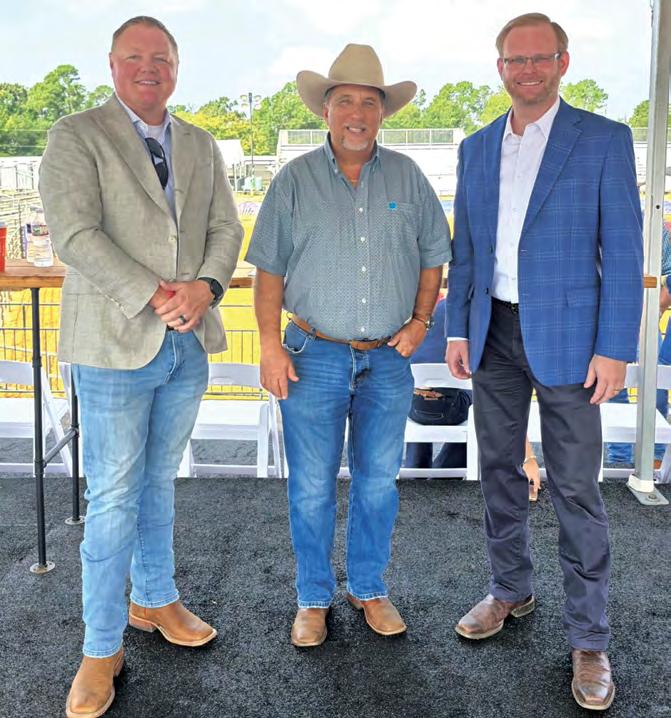
of dedication. PRCA Chief Marketing Officer Paul Woody was elated about this new collaboration. Woody said, “Rodeo is about community, and the PRCA is always proud when a new rodeo chooses to be a PRORODEO. Our athletes and contract personnel are the best in the business, and we know the East Texas State Fair will be a fantastic partner for years to come."
Moreover, enhance the layers of partnerships, the ETSF has teamed up with the award-winning stock contractor, Pickett Pro Rodeo.
For such a gargantuan

event, volunteers are the bedrock of their success. "I think the pillars like David and the volunteers really did a great job and continue to support the community,” Clay Cavendar remarked at the ribbon cutting. “Tyler is a special place, and I'd like to say that this should be an annual event and tradition that people want to come to. Everybody knows it just doesn't happen without great volunteers with big hearts for the community, so thank you all and let's rodeo."
Looking ahead, the Tyler Independent School District


and the ETSF plan to continue their partnership by creating opportunities for students to engage with rodeo culture and agricultural education. This collaboration is hopeful for future generations to cherish and understand the vital role agriculture plays in East Texas.
Congratulations to the inaugural East Texas State Fair Rodeo Champions:
• Bareback Riding - Payton Lackey
• Steer Wrestling - Laramie Warren


• Team Roping - Walker Smith & Will Smith
• Saddle Bronc Riding (Tie)
- Roper Kiesner & Caleb Miller
• Tie-Down Roping - Mason Stueve
• Breakaway Roping (Tie)Madison Outhier, Jill Tanner & Shayla Smith
• Barrel Racing - Emily Askew
• Bull Riding - Trevor Reiste
ROUGH STOCK, BIG MONEY, REAL COWBOYS
The PRCA rode in, the crowd stood up, and East Texas got a rodeo it won’t forget.
DUST KICKED UP, HISTORY MADE
PRCA hits Tyler like a thunderclap — boots down, bulls loose, and East Texas never looked back.
The PRCA brought the heat, the Herd Arena brought the roar, and East Texas wrote a new chapter in rodeo grit.
EAST TEXAS STATE FAIR: WHERE THE DIRT FLEW AND LEGENDS TOOK HOLD”
East Texas carves a new legacy as PRCA storms the fairgrounds with grit, glory, and a whole lot of horsepower.
GOD’S WORD:
“This is how you are to eat it: with your cloak tucked into your belt, your sandals on your feet and your staff in your hand. Eat it in haste; it is the Lord’s Passover.”
– Exodus 12:11
By GLENN MILLER
On the weekend preceding the first Monday of every month, thousands of people from all over the country converge on the small East Texas town of Canton to visit the hundreds of acres of “the world’s largest garage sale.” One can find just about anything there. From used stuff to brand new stuff; from lawnmowers to lithographs; from dominoes to dinglehoppers. It’s a cross between a country fair and an old-time bazaar.
As I entered the gate a few years back, I saw a lot of things I’d never seen before. There was a coffee table made out of an elephant’s foot, homemade eggplant preserves, velvet paintings of the president, and rows upon rows of folklore

artisans that would rival any of today’s classical artists. And then there are the hundreds of stands selling everything from hot dogs to corny dogs; from BBQ to ice cream; from gyros to hoagies. But it was one of these stands in particular that caught my eye. I thought in my years I had seen it all, but apparently I hadn’t been to Canton before. There in one of the corners, next to Aunt Beulah’s Quilts, was a vendor selling… DEEP FRIED TWINKIES!
My curiosity had the best of me and I just had to try one to see what it was like. (I don’t need much of an excuse to eat, but this was in the name of science!) At first it reminded me of a Mexican Sopapilla but then came the familiar taste of the creamy center that only a Twinkie can have. Something just wasn’t right. The texture and the taste just didn’t belong
together. It was culinary sacri lege! Mustering the courage to continue investigating, the sec ond one was about the same as the first and left me with no desire for a third. So I moseyed on down the row to see what I could find to cleanse my pal ate. (Word of advice: Margue ritas are not good deep-friedTwinkie chasers!)



So how do I tie this into a spiritual matter? Oh, ye of little faith! I suppose that there are just some things that don’t need to be improved upon. God cre ated things that man can never replicate: a sunset, a sunrise, a cool rain on a hot summer day, and any number of things found in nature. But quite often man believes he can improve on God’s creation and only ends up making things worse. God created the world that we may enjoy Him and live abundantly in it.



a story of hope, healing, and community
The W.T. Brookshire Conference Center in Tyler, Texas, recently came alive with excitement, elegance, and a profound sense of purpose. The 15th Annual Bethesda Birthday Bash, themed “A Hollywood Premiere in the Rose City,” brought together supporters, volunteers, patients, and community leaders for an unforgettable night of generosity and inspiration. The event celebrated not only Bethesda Health Clinic’s milestone but also its unwavering mission: to bring healing and

hope to the people it serves by providing accessible healthcare to underserved families.
From the moment guests arrived, they were welcomed into an atmosphere of anticipation and joy. The center sparkled with lights and decorations that created a sense of celebration and reverence for the cause at hand. Guests mingled, sharing stories of personal connection to the clinic and reflecting on why Bethesda holds such a cherished place in the hearts of East Texas families.
The evening featured both a silent and a live auction, each showcasing items and experiences generously donated by local businesses, artists, and members of the community. One of the most anticipated moments came early in the night: the live auction of the very first decorated cake of the evening. This cake, crafted by the Cruz family, patients of Bethesda, was more than just a beautiful dessert; it represented a story of faith, resilience, and the power of compassionate healthcare.
The Cruz family’s journey resonated deeply with the audience. Their story is one of hope amidst challenge: balancing a growing family with financial pressures, facing health concerns, and navigating life
with courage and faith. As one member of the family shared with the packed audience, “Through fasting and prayer, we found healing. Bethesda was a promise fulfilled, a testament to God’s provision.” Their words were met with nods of understanding and applause, a reminder to everyone present that Bethesda’s impact extends far beyond medical care, it touches the very heart of families, offering hope when it is needed most.
For the Cruz family, Bethesda was a lifeline. They recounted how medical needs had often taken a backseat to daily responsibilities, but through the clinic’s care, they were able to address urgent health concerns and receive guidance that combined clinical expertise with spiritual support. One poignant memory shared by the family highlighted the moment they realized Bethesda had become a place of true sanctuary: after a series of tests, including an ultrasound for the husband, and months of worry, they felt a renewed sense of safety and reassurance. “We are grateful to Bethesda for caring for all of us and for our family,” they said. “Bethesda is a blessing, and we hope it continues to bless many more families.”

As the first cake was auctioned, the energy in the room was palpable. Laughter and excitement mingled with the underlying sentiment of gratitude. Guests bid enthusiastically, not just for the cake itself, but for the opportunity to directly support the clinic’s mission. Every dollar raised during the night would translate into accessible medical, dental, and mental health care for families who might otherwise go without.
It is important to note Bethesda Health Clinic operates without reliance on federal funding. Its mission is made possible entirely through the dedication of volunteers, the generosity of sponsors, and the commitment of donors who believe in the clinic’s vision. The event highlighted the many facets of Bethesda’s service to the community, from compassionate care and affordable healthcare for the uninsured, to preventive medicine, specialized services, and mental health support. One
guest reflected on this comprehensive approach, saying, “Bethesda isn’t just a clinic: it’s a lifeline for families. It treats the whole person, body, mind, and spirit, and that’s what makes it truly special.”
Throughout the evening, attendees shared reasons why they support Bethesda. Some emphasized the clinic’s foundation in faith, noting that its work aligns with the principles of serving others through Christ’s love. Others highlighted the compassionate care that every patient receives, regardless of circumstances. Many spoke of the access the clinic provides for those without insurance, the volunteer physicians who dedicate their expertise, and the focus on wellness and prevention that keeps families healthier in the long run. Additional reasons included the clinic’s community impact, specialized services such as dental and vision care, pediatric care, mental health support, educational programs, and the efficiency with which donations are used to directly benefit patients.
In addition, the evening was punctuated by moments of heartfelt testimony. Several families shared how Bethesda had helped them navigate critical health challenges, often in times of crisis. One family recounted how, through Bethesda’s guidance, they were able to maintain stability while managing complex medical needs. Another highlighted the clinic’s role in breaking cycles of poverty by keeping parents healthy and
empowering children to thrive.
“Bethesda is like good news brought to life,” one attendee said, echoing the words of the angel in Luke 2:10. “It’s a beacon of hope for families in their most vulnerable moments.”
By the end of the night, the atmosphere was charged with gratitude, generosity, and shared purpose. The success of the event stood as a testament to the collective belief in Bethesda’s mission and to a shared understanding voiced by participants, former board members, and community supporters: that healthcare is not only about treatment, but about healing lives, strengthening families, and nurturing a healthier community. As the evening concluded, attendees left inspired, carrying with them reflections of resilience and hope, and a renewed commitment to uphold the vision of an organization that continues to change lives every single day.
In celebrating 15 years of service, the Bethesda Birthday Bash reminded everyone present that health, hope, and community are inseparable. Through compassionate care, dedicated volunteers, and the generosity of donors, Bethesda Health Clinic continues to serve as a lifeline for East Texas families. The evening was more than a gala; it was a celebration of what is possible when a community comes together to care for its most vulnerable members, uplift one another, and honor the legacy of love and service that Bethesda embodies.

$23M FACILITY, $1.46M SAVED — THAT'S GOOD
Story and photos by JOYCELYNE FADOJUTIMI www.infinitieplusmag.com
After years of planning and construction, Gregg County has officially opened its new downtown Parking Facility and Office Complex—a project County Judge Bill Stoudt calls one of the most significant of his tenure.
Standing across the street from the courthouse, the facility is more than just a place to park. It includes 13,000 square feet of office space, soon to be home to the Tax Office, Elections Administration, and the Veterans Administration.
“People kept calling it a parking garage,” Judge Stoudt said. “But it’s more than that. It’s a parking facility because you don’t take your car here for repairs—you park here. Plus, it’s also an office complex designed to serve the public.”
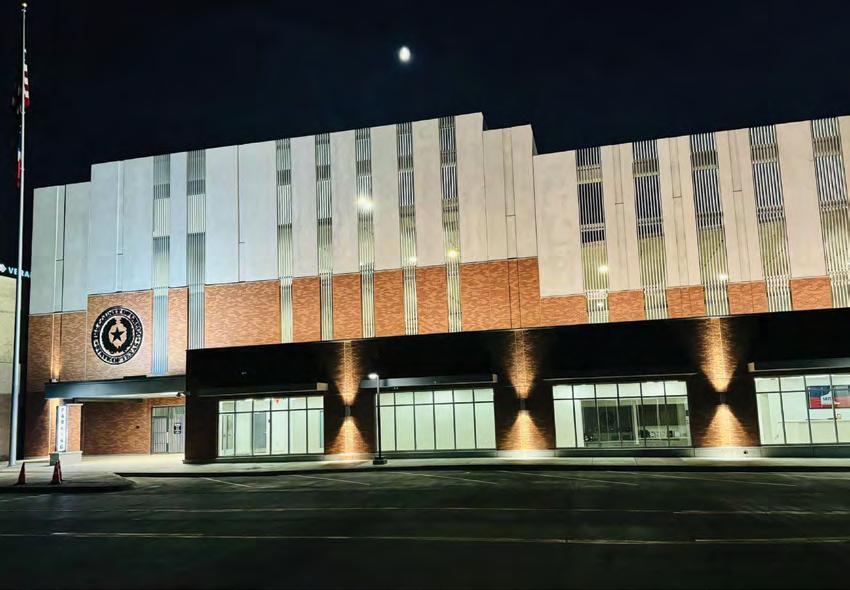
and came in below the voterapproved bond amount.
Instead of depleting reserves to pay in cash, the county borrowed money at a low 4.23% interest rate through tax-exempt bonds and invested reserve funds at a higher 4.8% return.
“That’s just smart business,” Stoudt explained. “We borrowed at a low rate, invested at a slightly higher one, and we’re making money while paying it off.”
“We needed this—not just as a parking solution, but as a part of the long-term vision for Gregg County. I’m proud of what we’ve built.”
FACTS: GREGG COUNTY PARKING FACILITY
• Opened: September 2025
• Cost: $23.7 million
• County Contribution: $7 million down payment
• Office Space: 13,000 sq. ft.
• Departments Moving In: Tax Office, Elections, Veterans Administration
• Projected Payoff: Within 5 years
• Tax Rate Reduction (if paid off early): 1.02 cents

“We didn’t want just another concrete box,” he said. “We wanted something that adds beauty and convenience. If you haven’t seen it at night, I encourage you to go. It’s impressive.”
The new facility features secure areas for voting equipment, elevators with direct courthouse access to the offices on the first floor, and a modern architectural design that enhances the downtown landscape. Judge Stoudt emphasized that it’s built not just for function but to be a statement piece for downtown Longview.
This project is the largest county-funded project Judge Stoudt has overseen since taking office.
“We've partnered on bigger projects with TxDOT and others—like the George Richey Road and the 149-Eastman Road intersection—but this is the biggest standalone project done entirely by the county,” he noted.
The total cost came to $23.7 million, but the county made smart financial moves to keep the project under budget. They ended up saving $1.46 million
Of the $23.7 million total, the county put $7 million down and borrowed only $17 million, despite voter approval for $19 million. A five-year call and 20year amortization were set in place, giving the county flexibility. Since the project began, they’ve already placed $11 million in a sinking fund, with hopes of paying off the facility within five years.
“If we do that, we’ll be able to drop the tax rate by 1.02 cents and be completely out of debt on this project—15 years ahead of schedule.”
He added that the parking facility is a critical investment not just for today, but for the future of downtown Longview.
• Amount Borrowed: $17 million (under $19 million bond approval)
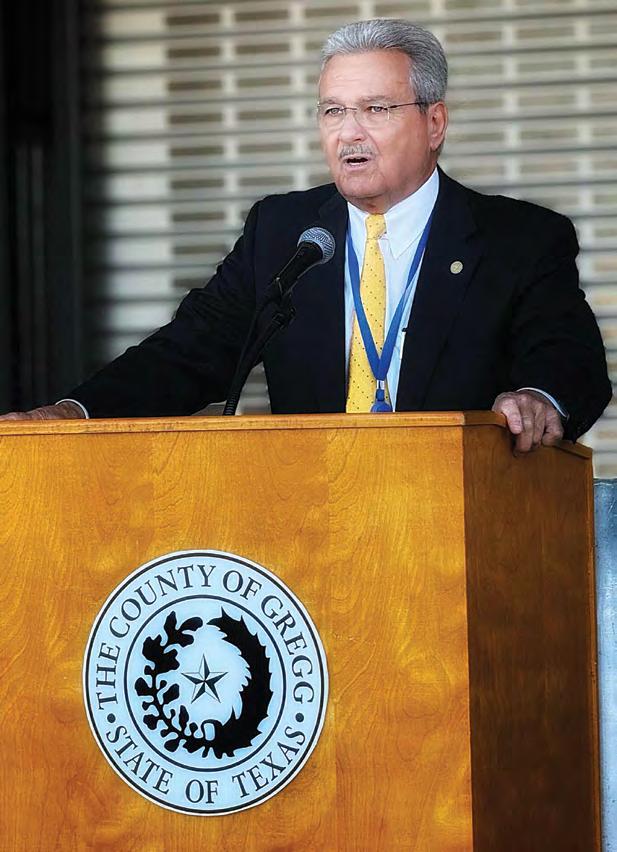
• Elevators with direct courthouse access to the offices on the first floor, and a modern architectural.
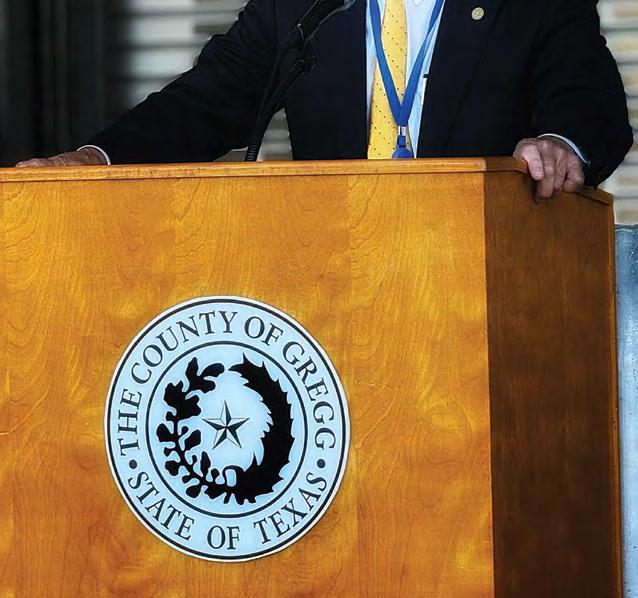

Through her weekly podcast, examples of topics have included healing from the loss of a spouse, healing from an abortion, and how to set up boundaries and limitations. You can find her podcast on multiple platforms, including YouTube and Spotify.
In addition, she has authored a chapter in the book, 40-day devotional “Spiritual Warrior Woman: Pray” by Dr. Angela Ruark and other authors. A compilation
of true stories written by women of East Texas. She has also spoken at women’s conferences, churches, and events, sharing her abortion and breast cancer testimonials and what God has taught her.
She stays active in the community and has been a part of several organizations, such as the Women’s Fund of Tyler, the Women’s Symphony Board, and the Robert E. Lee Band Program Volunteer.
Furthermore, she has received multiple accolades:
Resident of the Year Presbyterian Hospital of Dallas.
Bethesda Health Clinic Dr. Luke Society Award.
Shepherd’s Heart Order of the Towel Award.
Reflecting on her medical career, she finds it has been profoundly rewarding. She has a deep love for her patients and their families, making the decision to retire from private practice a challenging one. However, over the years, she has learned that life brings different seasons, each with its own set of possibilities and excitement.
For those considering a path in medicine, she offers this advice: "Be sure this is what you really want, as you will spend many years in school and countless nights training to be a physician," she says. “It definitely has to be your first ‘love’ and not the second ‘option.’” She eagerly anticipates her new role as a grandmother. "I am so grateful to the Lord for extending my life to see the birth of our grandchildren," Grace says.
In a community filled with prominent leaders and devoted citizens, Dr. Grace English stands out as a testament to the power of love, faith, and service. Her story is not only one of professional achievement but also a profound narrative of personal transformation and dedication to God’s will.

Breast cancer is a formidable disease that affects millions of individuals each year. The impact of breast cancer goes beyond those diagnosed with the disease, affecting friends, family members, professional colleagues, and others as well.
What is breast cancer?
The Centers for Disease Control and Prevention note that breast cancer occurs when cells in the breast grow out of control. The breast is made up of three main parts known as the lobules, ducts and connective tissue, and which type of breast cancer a person has depends on which cells in

the breast turn into cancer.
Is there a typical breast cancer?
No two individuals diagnosed with breast cancer will have the same experience after being diagnosed. However, the CDC notes that most breast cancers begin in the ducts or lobules.
What are some common risk factors for breast cancer?
The National Breast Cancer Foundation, Inc. notes gender is the foremost risk factor for breast cancer, as the WHO reports that 99 percent of breast cancers occur in women. The NBCF also notes that women who have dense breast tissue may be at greater risk for
breast cancer because such tissue can make it harder to detect lumps.
What causes breast cancer?
The NBCF notes that most women who have breast cancer will never be able to identify an exact cause behind their disease.
How important is early detection?
The American Cancer Society reports that the five-year survival rate for breast cancers discovered in the localized stage is 99 percent. That underscores the significance of early detection. The NBCF notes monthly breast self-exams and routine clinical exams increase the likelihood of early detection.
Anyone aspiring to lose weight is likely aware that there are no shortage of approaches promising to bust belly fat and slim waistlines.
Weight loss fads come and go, but daily physical activity remains a reliable and effective approach to shedding extra pounds.
The Centers for Disease Control and Prevention notes that physical activity provides both short- and long-term benefits. Among the more long-term benefits of regular exercise is the link between physical activity and how it facilitates an individual's ability to maintain a healthy weight.
The CDC notes that more physical activity increases the number
of calories a body uses for energy.
If individuals looking to turn over a healthier leaf couple a commitment to exercise with a healthier diet that includes consuming fewer calories, they can create a calorie deficit that ultimately contributes to weight loss.
According to the National Institute of Diabetes and Digestive and Kidney Diseases, being overweight or obese increases a person's risk for a host of diseases and conditions, including:
• Type 2 diabetes
• Hypertension (high blood pressure)
• Heart disease
• Stroke
• Metabolic syndrome
• Fatty liver diseases; certain
types of cancer, including cancers of the breast, liver, kidney, pancreas, and ovaries, among others;
• Gout
• Fertility problems
• Sexual function problems
• Mental health problems
Routine physical activity is a great way to help people shed extra pounds so they can reach and maintain a healthy weight.


It was during her first year of medical school that despair consumed her, where she no longer wanted to live. This prompted her towards a heartfelt plea to Jesus for salvation. In that pivotal moment, she began to develop a new community of friends who shared her faith, helping her start a transformative journey. It was also during this time that she met her husband, Dr. John English. She says, “God gave me one of his greatest gifts on this earth through giving me John to be my husband, my best friend, and confidant.”
Years later, as she navigated the complexities of motherhood, Dr. English struggled to understand the negative feelings she harbored toward her children. It was a close friend, Beverly Kline, founder of Living Alternatives, who invited her to attend an abortion recovery bible study. What started as a confrontation with guilt and shame evolved into sharing her own abortion testimony in a healing environment. Her personal experience ignited her passion for helping others confront the emotional challenges that often accompany similar choices. In her quest to provide support, Dr. English went on to found two nonprofits—Christcentered Abortion Recovery Education (CARE) and Deep in the Heart Ministries. She also launched her podcast, “Getting Real to Heal with Dr. Grace,” where she continues to
advocate for healing and hope through Christ.
After graduating from medical school, her career began with the CHRISTUS Mother Frances Trinity Health System in Tyler, Texas. However, her true calling soon beckoned her and Dr. John English to co-find the Bethesda Health Clinic, which serves the working uninsured population in the
area. What began as a humble initiative to provide medical care in a gutted warehouse with makeshift rooms, using shower curtains as walls to divide “patient rooms,” quickly grew into vital resources and a pressing need for the community. In 2004, Dr. John English accepted the position of the first paid director at Bethesda Clinic. Over the next 10 years,

Dr. English would volunteer, seeing patients one day a week, and continued to do so until returning to paid medicine as a hospice physician at Hospice of East Texas.
The mission to establish and expand the Bethesda clinic resonates deeply with Dr. Grace and Dr. John English, reflecting their long-standing commitment to medical missions. Throughout their medical school years, they participated in numerous mission trips to Mexico. In 1996, they spent three transformative months at the Baptist Missionary Hospital in Sanyati, Zimbabwe, where they not only gained invaluable experience. They have both been able to mentor medical students in patient care during their careers. So, when the opportunity arose to join the initial planning group for Bethesda Health Clinic, it was a natural fit for the couple. Now, they are excited to embark on a new chapter in the clinic's journey with the Greater Works Campaign. The campaign aims to renovate the historic Hollywood Theatre building, providing expanded service in the Rose City.
In March 2023, devastating news struck the English household when Dr. Grace English received an unexpected diagnosis: breast cancer. Despite her diligence in keeping up with mammograms and having no
known family history of breast cancer, she learned that a 3 cm mass had been discovered in her right breast.
Reflecting on her journey, Dr. English shares that the Lord took her on a challenging yet insightful path over the following two years, teaching her vital lessons about resting and trusting in Him while navigating months of chemotherapy, biological infusions, radiation, bilateral mastectomy, and breast reconstruction. The profound insights she gained during her cancer journey have forever altered her perspective on life. She says, “Our life is brief on this earth. We don’t know what is up ahead, but God knows. He has a purpose for our days and wants us to use our days wisely.” Dr. English recalls moments of vulnerability, such as lying on the couch completely drained by chemotherapy, before eventually re-engaging with life—working, ministering, and sharing laughter and tears with those around her.
She passionately believes that it is crucial to give God the glory in all circumstances, even during difficult times. With this faith, she finds comfort in knowing there is nothing to fear, as He goes before us, is with us, and dwells within us.
Dr. English has discovered her strength to face the challenges of cancer: the grueling treatments, and the uncertainty of not knowing if the cancer will
return. “I have learned I can do the hard things,” she says, as she continues to lean on God and the support of the community that surrounds her. She emphasizes the importance of accepting help from others, recognizing that laying down her pride not only benefits her but also serves as a blessing to those who offer their support.
Dr. English says, “Today I am cancer free and so very grateful.”
As she emerged from her battle with cancer, she continued to grow her nonprofits and podcast. She loves to hit the hot-button and raw topics in today’s culture. Through her podcast, "Getting Real to Heal with Dr. Grace," she connects with guests from diverse backgrounds, illustrating the profound impact of faith in overcoming life's adversities such as addiction to drugs, alcohol, and pornography.
Through Deep in the Heart Ministries, multiple women’s conferences have been held, and they are hosting their first men’s conference in February 2026. You will hear powerful stories of men who have broken free from addictions through the power of Christ, and how to navigate loss from suicide, and more.
Contd. on Page 6
By PAULA JIMENEZ

From exam rooms to prayer circles, mission fields to podcast mics, Dr. Grace English's calling has been consistent: to bring healing, hope, and truth to those in need. Now, newly retired from private practice and stepping into a new season as a future grandmother, podcaster, and ministry leader, Dr. English speaks about her personal and career journey and her battle with breast cancer. Dr. English references Romans 8:28: "And we know that in all things God works for the good of those who love him, who [a] have been called according to his purpose."
Dr. English was born in Taiwan to parents Margie and Joe Soo. She moved to Michigan at the age of three, where she spent her childhood, and later moved to Houston, Texas. She was raised in an environment that emphasized hard work and perseverance. Her father, a retired interventional radiologist, and her mother, who initially dedicated her time as a stayat-home mom, later earned her accounting degree and worked for the state government. Her sister Ann, who is one year
younger than her, was an internal medicine physician before retiring. And her brother Peter, two years her junior, pursued a career in psychiatry.
These formative experiences would shape her approach to medicine and life. In 1989, she met her husband, John English, in medical school, marking the beginning of a lasting partnership after she asked him to be her laboratory partner. She earned a bachelor's degree in biology from the University of Texas in Austin and completed her professional doctoral degree, Doctor of Medicine, at UT Southwestern Medical School in Dallas. She and John graduated from medical school in 1993, got married in 1994, and both completed their residencies in 1996.
Dr. John English was born in Longview, Texas. Hence, they knew they wanted to make East Texas their permanent home and chose to build their next chapter in Tyler, Texas. Dr. English says the greatest and most important job she has had is raising their three children, Sarah, Daniel, and Matthew. Their daughter, Sarah, is a physician and is in her second year of Family Residency Training
at the UT at Athens program. Their son, Daniel, is in his second year of medical school at the UT San Antonio School of Medicine, and their youngest son, Matthew, is a mechanical engineer in Shreveport.
Raising her children during their toddler years was not the picture of maternal love that Dr. English had envisioned. Instead, she found herself grappling with unresolved anger and a lack of connection with her children, feeling emotionally distant from them. The roots of her struggle were intertwined with a secret from her past— one she had tucked away for twelve long years—that resurfaced as she embarked on her journey of motherhood.
During her transition from high school to college, Dr. English ventured into dark waters in search of love. At eighteen, she became sexually active with her first boyfriend and got pregnant. Facing a difficult decision, she chose to have an abortion. In the aftermath, she spiraled into a lifestyle marked by substance abuse, excessive partying, and promiscuity, eventually leading to an eating disorder.
Contd. on Page 4



